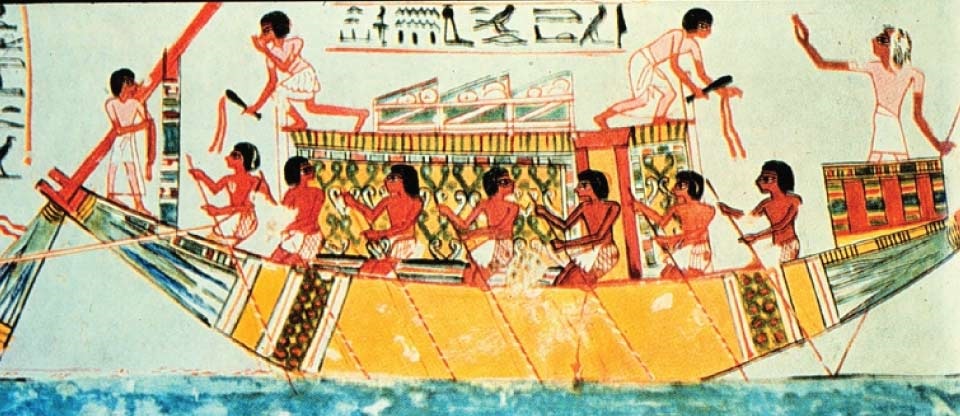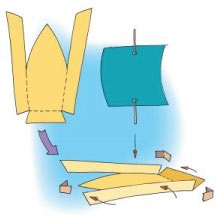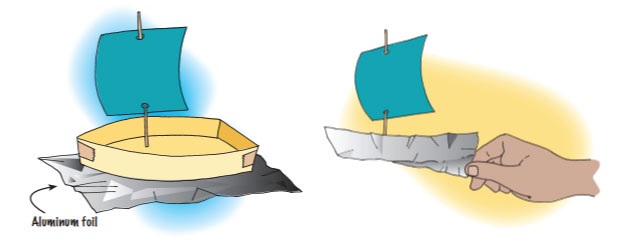Water tends to maintain a level surface. When you put an object into water, gravity pulls the object down and displaces some of the water, which means some of the water is pushed aside.
Now the surface of the water is no longer level. Gravity pulls the displaced water down, and causes an upward force on the object. This upward force is equal to the weight of the water that the object displaces, and is called buoyancy. Buoyancy depends upon the volume of liquid displaced as well as the density of the liquid. Density is the mass of a certain volume of liquid, usually stated as grams per milliliter. This is why it is easier to float in the ocean than in fresh water. Seawater is more dense than fresh water, so your buoyancy is greater in the ocean.
The amount of fluid that an object displaces depends upon the volume of the object: more volume means more fluid displaced, which means more buoyancy. Increasing the volume of an object also increases its surface area, which in turn increases the effect of friction as the object moves through the fluid. Boat designers have to consider buoyancy as well as friction when deciding on the shape of a boat’s hull. A boat designed for speed must have enough displacement to stay afloat, but surface area has to be minimized to decrease the effects of friction. On the other hand, an object designed to carry a heavy weight, such as a cargo ship, must be designed with greater displacement, as well as greater power to overcome the effects of increased friction.
Boat hulls are designed to displace a volume of water that weighs more than the boat and its cargo. If the force of displaced water pushing on the hull is greater than the force of gravity pulling the boat down, then the boat floats! But if you could take a sea-worthy boat hull, break it down, and bundle the pieces together, the bundle will sink. Why? Because there is no longer sufficient water displacement to counteract the force of gravity on the pieces of the hull.
Visit www.sedl.org/scimath/compass/v02n03/boat.html and www.thirteen.org/edonline/nttidb/lessons/jx/buoyjx.html for more boat building challenge ideas.
 An official website of the United States government.
An official website of the United States government.




